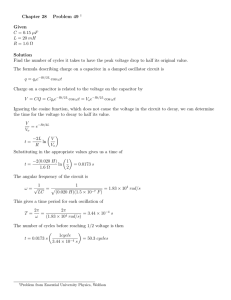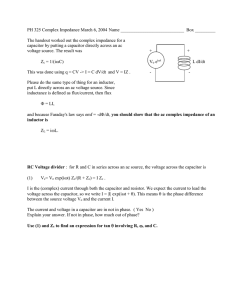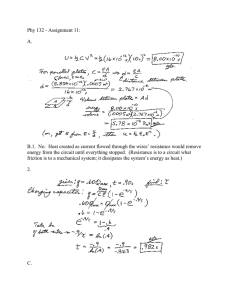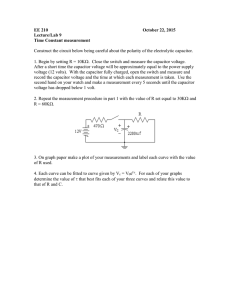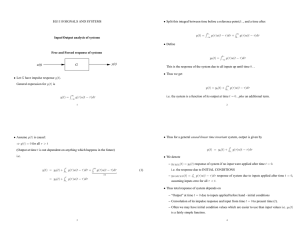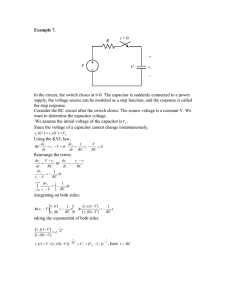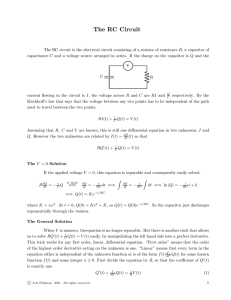Phy 122 - Assignment 7
advertisement
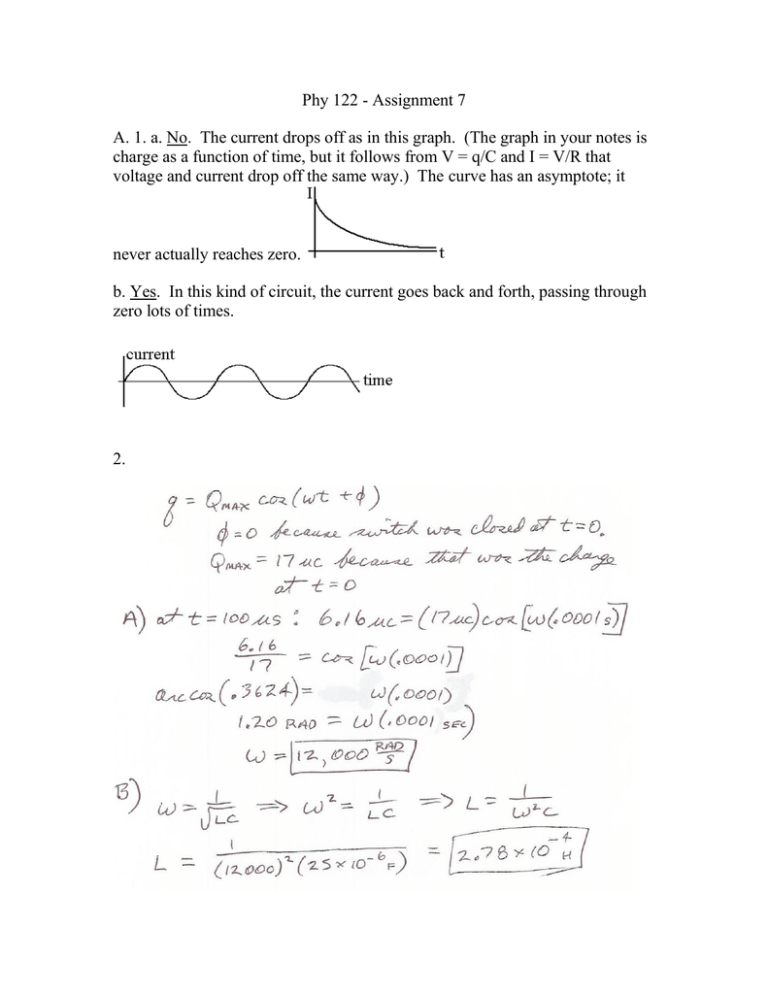
Phy 122 - Assignment 7 A. 1. a. No. The current drops off as in this graph. (The graph in your notes is charge as a function of time, but it follows from V = q/C and I = V/R that voltage and current drop off the same way.) The curve has an asymptote; it never actually reaches zero. b. Yes. In this kind of circuit, the current goes back and forth, passing through zero lots of times. 2. B. a) τ = RC = (2.00 x 106 )(6.00 x 10-6 F) = 12.0 s For a capacitor charging up: q = CE(1-e-t/τ) = (6.00 x 10-6)(20)(1-e-7/12) = (1.20 x 10-4)(1-.558) = 5.30 x 10-5 C C. 1. Decreases. More voltage means more charge in the capacitor. (Q = CV.) More charge in it means more repulsion against additional charge trying to flow in. So, as the capacitor approaches full charge, the current flowing into it approaches zero. c. Applying the loop rule to the circuit shown shows that the voltage across the capacitor is the same as the voltage across the resistor. So, put 4.22 V into Ohm’s law: I = V/R = (4.22 V)/(3000 Ω) = .00141 A D.1. 8.00 mH. Inductance is a fixed property of the coil, depending on size, number of windings, and so forth. (The usual mistake here is to confuse inductance with induced emf. The final emf is zero, but that’s not what the question asks.) 2. E. 1. The time constant means how long it takes to get 1-1/e (about 63%) of the way from where you started to where you’ll end up. a. 63% of the way from 15 V down to 0 V would mean you are now at 37% of the original voltage: (1/e)(15 V) = (.36788)(15 V) = 5.52 V b. 63% of the way from 0 V up to 15 V would mean you are now at 63% of the final voltage: (1-1/e)(15 V) = (.63212)(15 V) = 9.48 V = 0 because the process starts at t = 0. 1 1 (.003H )(2.5 10 6 F ) LC 11547 rad s q = (40 μC)cos[(11547)(.0013s)] = 40 cos(15.01 rad) = (40)(-.7669) = -30.7 μC b. C q V V q C 30.7 10 2.5 10 6 6 -12.3 V
